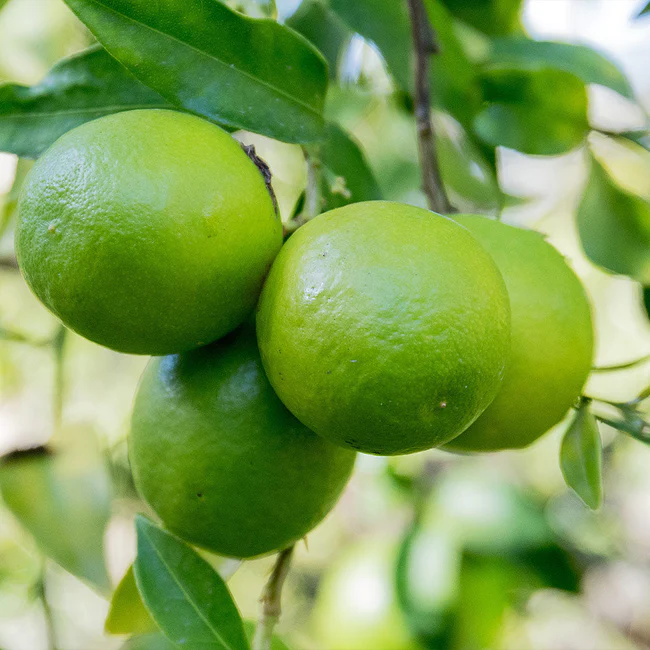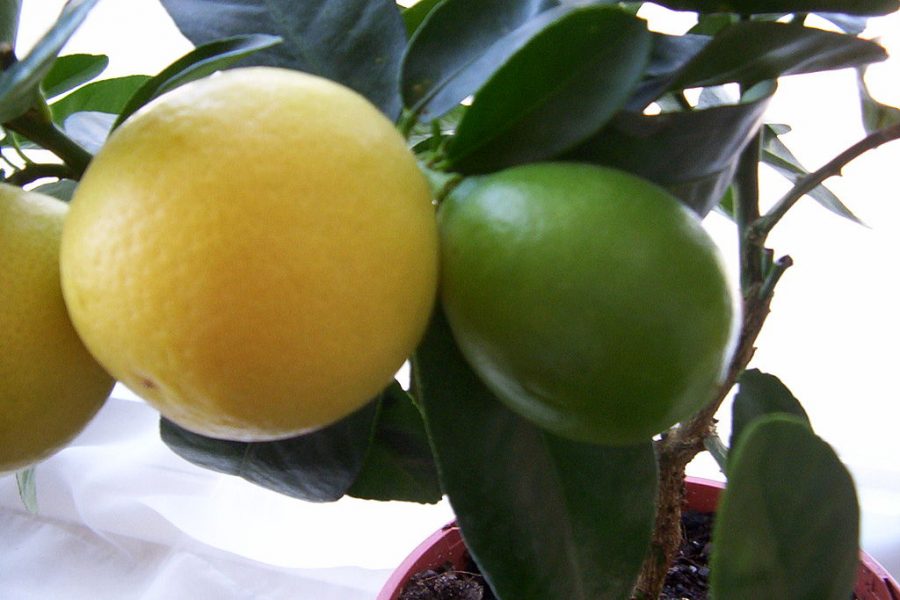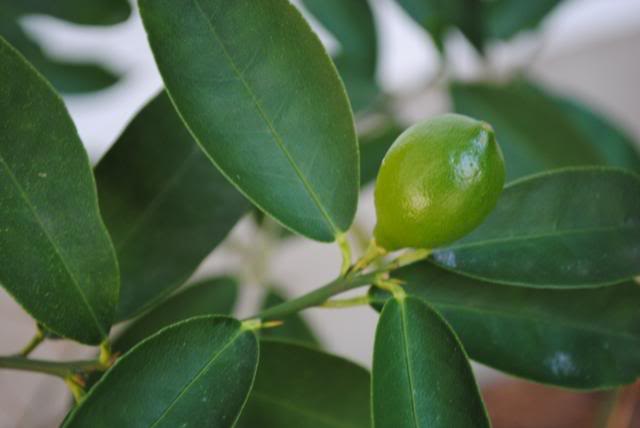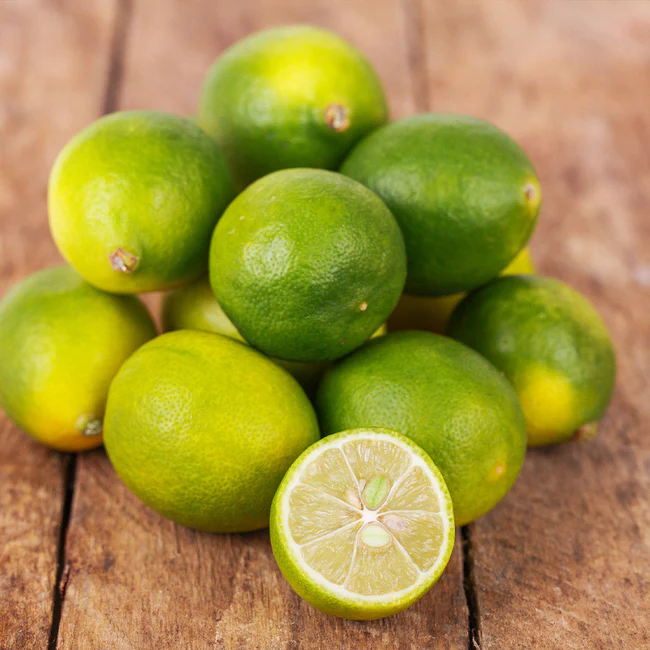This post contains affiliate links. If you buy something from one of our links we may earn a commission. Thanks

Limequat Tree Care Made Easy
Are you thinking about growing a Limequat tree? This easy-to-follow guide will give you 5 expert tips and tricks to ensure the health and longevity of your limequat trees.
Growing a Limequat tree requires a sunny location with well-draining soil. Water it regularly, keeping the soil moist but not waterlogged.
It appreciates fertilization with a citrus-specific fertilizer every six to eight weeks during the growing season. Ensure frost protection as Limequats are sensitive to cold temperatures.
Limequats are small citrus trees that are prized for their sweet and tart fruit. Limequat trees are highly versatile and can be grown indoors or outdoors, making them a great choice for those who want to cultivate their own citrus trees.
In this guide on Limequat Tree Care, we will provide a comprehensive explanation of what a limequat tree is, the importance of proper care when growing it indoors, and an overview of five expert-recommended strategies for ensuring your limequat citrus tree has success.
When grown indoors, it is even more important to provide proper Limequat tree care to ensure its health and vitality.
Proper care for indoor limequats includes considerations for factors such as sunlight, temperature, humidity, and watering.
Young trees like the Eustis limequat require more care than an established tree and neglecting it can affect the health of the tree.
A little bit of extra care goes a long way for a little tree with a small root system.
By following these strategies, you can cultivate a thriving indoor limequat tree that produces delicious citrus fruits and adds a touch of beauty to your indoor environment.
What Is A Limequat?
You may not be familiar with limequats if so a limequat is a citrus hybrid fruit that is a cross between a lime and a kumquat.
It makes small fruits that are oval-shaped fruit and is yellow-green in color and has a sweet and sour flavor.
The edible fruit also has edible sweet skin and offers a unique flavor. They have a sweeter more orange-like taste than key limes.
Limequats are often used in cooking, baking, and as a garnish for drinks.
They can also be eaten raw and are a good source of vitamin C.
Limequats are commonly grown in warm climates, but they can also be grown indoors in pots and other containers, making them a popular choice for those with limited outdoor growing space.
How Do You Harvest And Use Limequats
Limequats are typically harvested when they are fully ripe, which is usually in the late winter or early spring.
To harvest them, simply twist the tasty fruit gently off the tree and pick off any remaining stems. Limequats can be eaten raw, but they are often used in cooking, baking, and as a garnish for drinks.
They are an excellent source of sour flavor and can be used in a variety of recipes, including marmalades, jellies, syrups, and drinks.
They are also a great addition to savory dishes, such as salads, sauces, and marinades, where they add a tangy and bright flavor.
To store, place them in a cool, dry place for up to a week, or in the refrigerator for up to a month.
Limequat Tree Care Made Easy: 5 Expert-Recommended Strategies
Importance of Proper Care:
Proper care is crucial for maintaining a healthy and thriving limequat tree, whether it is grown indoors or outdoors.
This includes providing the right amount of sunlight, water, and nutrients, as well as controlling factors such as temperature and humidity.
Neglecting proper care on a small tree can lead to poor growth, disease, and even death of the tree.
Overview of 5 Expert-Recommended Strategies:
Here is a brief explanation of basic care and the five recommended strategies for ensuring the health and longevity of your limequat tree and what we will cover in this article.
• Choosing the right pot, soil, and fertilizer
• Providing adequate sunlight
• Maintaining proper temperature and humidity
• Proper watering techniques
• Regular pruning and maintenance
By following these five simple strategies, you can cultivate a thriving limequat tree that produces delicious fruit and adds a touch of beauty to your indoor or outdoor environment.

Strategy 1: Proper Watering
Proper watering is one of the most critical factors in ensuring the health and longevity of your limequat tree.
The right amount of water helps the tree absorb essential nutrients, regulate its temperature, and maintain its overall well-being.
How to Water the Tree Correctly:
When watering your limequat tree, it is important to provide the right amount of water. The soil should be kept consistently moist, but not soaking wet.
A good rule of thumb is to water your fruit tree once a week, or whenever the top inch of soil feels dry to the touch.
Signs of Overwatering/Underwatering:
Overwatering can lead to root rot and other issues, while underwatering can cause the leaves to turn yellow and drop off.
It is important to monitor your tree and look for signs of overwatering or underwatering, such as yellowing leaves, wilting, or mushy roots.
If you notice any of these signs, adjust your watering habits accordingly.
Proper watering is a delicate balance, but with a little care and attention, you can keep your limequat tree healthy and hydrated.
Strategy 2: Proper Sunlight And Temperature
Without proper sunlight, the tree may struggle to grow and produce fruit. In this section, we will explore the ideal conditions for sunlight and how to ensure your limequat tree is receiving the right amount.
Adequate sunlight is essential for the growth and health of your limequat tree. It provides the energy necessary for photosynthesis, which is the process through which the tree produces its own food.
Ideal Sunlight Conditions for Limequat Trees:
Limequat trees require a minimum of 6 hours of direct sunlight each day, and preferably up to 8 hours of full sun.
Citrus plants can also tolerate a small amount of indirect light throughout the day. If grown indoors, place the tree near a bright window where it can receive plenty of sunlight.
If you cant provide at least 6 hours of natural sunlight you can use an LED grow light to supplement natural lighting.
Signs of Over-Exposure/Under-Exposure to Sunlight:
Over-exposure to sunlight can cause the leaves to become sunburned or yellow, while under-exposure can lead to poor growth, yellow leaves, and a lack of fruit production.
It is unlikely a Limequat will be overexposed to natural light but it is possible if you have an LED light that is too close.
To ensure your limequat tree receives the right amount of sunlight, monitor it regularly for signs of over-exposure or under-exposure, such as yellowing leaves or stunted growth, and adjust its location accordingly.
Proper sunlight is crucial for the growth and well-being of your limequat tree, and with a little care and attention, you can help it thrive.
Limequat Temperature
A limequat (Citrus x floridana)is a fruiting tree that is a hybrid between a kumquat and a key lime.
It is more cold-tolerant than most lime trees, but a little less so than most kumquats. It can usually survive temperatures as low as 22 F. for a short time but not without damage.
You can move your limequat outdoors during the summer months but it needs to be indoors during the late fall and winter seasons.
This plant likes warm temperatures and winter temperatures will harm or kill it. It will do well as long as the temperature range is between 50 °F to 86 °F.

Strategy 3: Soil Management
The soil in which your limequat tree is planted plays a crucial role in its growth and health.
The right soil provides the tree with the necessary nutrients and space for its roots to spread, while poor soil can lead to stunted growth and other issues.
In this section, we will discuss the ideal soil conditions for limequat trees and how to ensure optimal soil conditions for your tree to thrive.
Importance Of A Good Soil Mix:
The quality of the soil in which your limequat tree is planted plays a crucial role in its growth and well-being.
The right soil provides the tree with the nutrients it needs to thrive, while a poor type of soil can lead to stunted growth, yellowing leaves, and other issues.
You need to use well-drained soil.
Ideal Soil Conditions for Limequat Trees:
Limequat trees prefer well-draining soil that is rich in organic matter. The soil should be slightly acidic, with a pH of 6.0 to 6.5.
The tree also needs adequate space for its roots to spread, so be sure to choose a pot that is large enough and has sufficient drainage holes.
How to Ensure Optimal Soil Conditions:
To ensure your limequat tree has the best possible soil conditions, consider the following steps:
Choose the right pot:
A pot that is too small will not provide enough space for the roots to spread, while a pot that is too big can lead to overwatering.
Choose a pot that is slightly larger than the root ball, with enough drainage holes in the bottom of the pot to allow excess water to escape.
Water thoroughly after potting your limequat tree to remove any air pockets from the soil.
Use the right soil mix:
You can use a special citrus soil mix but I prefer a mix of coco coir and 25-50% perlite will provide the ideal growing conditions for your limequat tree.
A homemade mix of peat moss, perlite, and vermiculite can also be used but the coco mix will work better.
Fertilize regularly:
Regular fertilization will help your limequat plant receive the nutrients it needs to grow and produce fruit.
Choose a balanced, all-purpose fertilizer and apply it according to the manufacturer’s instructions.
The use of tree spikes will take the guesswork out of fertilizing. Here is what I recommend for  fertilizing your Limequat.
fertilizing your Limequat.
I recommend using Jobes Organics fertilizer spikes.
They are easy to use and last for 2-3 months.
They are designed for container-grown citrus.
Using 2 spikes for a 12-inch pot or 3 for an 18-inch pot takes the guesswork out of fertilizing.
They provide a 3-5-5 fertilizer blend along with micronutrients and beneficial bacteria.
Monitor the soil moisture:
The soil should be kept consistently moist, but not soaking wet. To avoid overwatering, allow the top inch of soil to dry out before watering the tree again.
By taking these steps to manage the soil conditions, you can help your limequat tree grow healthy and strong.
Proper soil management is essential for the long-term success of your tree, and with a little care and attention, you can ensure it thrives.
Strategy 4: Fertilization
Fertilization is an important aspect of limequat tree care as it provides the tree with the necessary nutrients for growth and fruit production.
In this section, we will discuss the importance of proper fertilization and how to choose and apply the right fertilizer for your limequat tree.
With proper fertilization, you can help your limequat tree reach its full potential and produce an abundance of delicious fruit.
Why Fertilizing Is Important
Fertilization is essential for the growth and health of limequat trees. Limequats require certain nutrients, such as nitrogen, phosphorus, and potassium, to grow strong roots and leaves, and produce fruit.
Without the right nutrients, the tree can become stunted or produce little to no fruit. Fertilization provides the tree with these essential nutrients and helps it reach its full potential.
How to Fertilize Limequat Trees
There are several options for fertilizing limequat trees, including granular fertilizer, slow-release fertilizer, and water-soluble fertilizer.
When choosing a fertilizer, it’s important to look for a product that is specially formulated for citrus trees and contains the necessary nutrients.
I recommend using Jobes Organics fertilizer spikes.
The application method will vary depending on the type of fertilizer you choose, but it’s important to follow the instructions on the packaging carefully.
Over-fertilization can cause more harm than good, so it’s important to apply the fertilizer in the recommended amount.
Optimal Fertilization Schedule
The optimal fertilization schedule for limequat trees will depend on several factors, including the tree’s age, soil conditions, and climate.
As a general rule, it’s recommended to fertilize the tree three to four times per year, with the first application in the spring, and the final application in the fall.
Tree spikes are a no-brainer because you just need to replace them every few months and don’t need to worry about over or under-fertilizing your trees.
If you can grow citrus outdoors year-round then before fertilizing, it’s a good idea to have the soil tested to determine what nutrients it is lacking.
Based on the results, you can then choose a fertilizer that contains the necessary nutrients and apply it according to the manufacturer’s instructions.
By following an optimal fertilization schedule, you can ensure that your limequat tree receives the right nutrients at the right time to promote healthy growth and fruit production.
Strategy 5: Pruning
Pruning is an important part of limequat tree care as it helps to promote healthy growth and improve the shape and structure of the tree.
In this section, we will discuss the importance of pruning and provide tips on how to prune your limequat tree correctly.
With proper pruning, you can keep your limequat tree looking its best and encourage it to produce a bountiful crop of fruit.
The Importance Of Pruning
Pruning is crucial in the proper care of limequat trees as it helps to maintain their health, shape, and structure.
It also encourages new growth, improves the tree’s ability to produce fruit, and eliminates any dead or diseased branches.
Regular pruning also allows for better light and air penetration, ensuring that all parts of the tree receive the proper amount of nutrients and sunlight needed for growth.
How to Prune Limequat Trees
When pruning limequat trees, it’s important to use sharp, clean pruning shears.
Start by removing any dead, diseased, or crossing branches. Then, cut back any long shoots to a pair of buds to encourage branching.
Finally, shape the tree by removing any suckers or shoots that grow vertically, as this will improve the tree’s overall structure and make it easier to manage.
When to Prune
The ideal time to prune limequat trees is in the late winter or early spring before new growth begins.
This way, you can see the structure of the tree clearly and make any necessary cuts without damaging new growth.
It’s important to avoid heavy pruning during the growing season as it can stress the tree and negatively impact its growth and fruit production.

Bonus Strategy 6: Dealing with Insect Pests and Diseases
Common Pests and Diseases
Limequat trees are susceptible to a variety of insect pests and diseases, such as scale insects, spider mites, and powdery mildew.
These pests and diseases can weaken the tree, reduce its fruit production, and even cause its death if left untreated.
How to Treat Them
To treat insect pests, you can use natural methods such as neem oil or insecticidal soap, or you can use chemical insecticides.
It’s important to follow the instructions on the product label and apply them correctly to avoid damaging the tree.
For disease prevention, it’s important to provide your limequat tree with proper care, including adequate sunlight, water, and nutrients.
If your tree does become infected with a disease, it’s important to remove any affected branches and dispose of them to prevent the spread of the disease to other parts of the tree.
You can also use copper-based bactericides or fungicides to help control and prevent diseases.
By following these expert-recommended strategies for proper care and treating pests and diseases, you can keep your limequat tree healthy and productive for years to come.
Limequat FAQs
The Limequat tree is a symbol of horticultural ingenuity, a beautiful blend between a key lime and a kumquat.
Its petite size and generous fruiting make it a desirable choice for garden enthusiasts.
However, the journey to a bountiful Limequat tree poses a set of questions regarding its care, sunlight requirements, watering schedule, and cold tolerance.
As you embark on the adventure of growing a Limequat tree, understanding the nuances of its care can be the key to a fruitful endeavor.
Below, we explore some of the common queries that might arise as you nurture your Limequat tree to fruition.
Q. What type of soil is ideal for growing a Limequat tree?
A. Well-draining, slightly acidic soil is ideal for Limequat trees to prevent waterlogging and promote healthy root growth.
Q. How much sunlight does a Limequat tree require?
A. Limequat trees thrive in full sun, requiring at least 8-10 hours of sunlight daily to flourish and bear fruit.
Q. What is the watering regimen for a Limequat tree?
A. Regular watering is crucial, especially in the initial years. The soil should be kept moist, but not waterlogged. It’s advisable to let the top inch of soil dry out between waterings.
Q. How should I protect my Limequat tree from frost?
A. Limequat trees are frost-sensitive. Providing a sheltered location, using frost cloths, or moving potted Limequats indoors during cold spells can help protect them from frost damage.
Final Thoughts
In this blog post, we have covered the 5 expert-recommended strategies for proper care of limequat trees, including proper watering, sunlight, soil management, fertilization, and pruning.
By following these strategies, you can ensure that your limequat tree is healthy and productive for years to come.
In conclusion, it’s important to understand the importance of proper care for limequat trees, especially if you are growing them indoors.
By providing them with adequate sunlight, water, and nutrients, you can ensure that they thrive and produce abundant fruit.
Additionally, by monitoring for and treating any pests or diseases, you can prevent issues that could weaken the tree or reduce its fruit production.
In the end, the key to successful limequat tree care is to be proactive and consistent.
By following these expert-recommended strategies, you can be confident that your tree will receive the care it needs to thrive.
So, don’t hesitate to implement these strategies today and enjoy the benefits of a healthy and productive limequat tree!
Learn more about growing citrus trees indoors
How To Grow Buddha’s Hand Indoors







